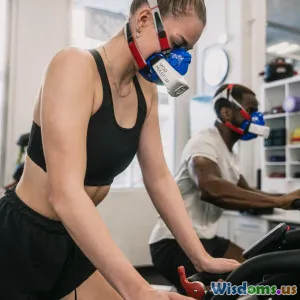
Why Female Athletes Have Unique Nutritional Needs Explained
8 min read Explore why female athletes need tailor-made nutrition to enhance performance and health, backed by science and real-world insights. (0 Reviews)
Why Female Athletes Have Unique Nutritional Needs Explained
Athletes across all disciplines push their bodies to achieve peak performance, yet a one-size-fits-all nutritional approach often falls short—especially when it comes to female athletes. Despite representing nearly half of all competitive athletes worldwide, women have long been underserved by generalized nutrition guidance that mainly derives from male-centric research.
Why is this an issue? Because biological and physiological differences mean female athletes have unique nutritional needs that, if overlooked, can hinder their performance, recovery, and long-term health.
In this article, we explore what makes female athlete nutrition distinct, unpack the science behind it, and offer real-world examples to illustrate how tailored nutrition enhances outcomes.
The Physiological Foundations Behind Nutritional Differences
At the heart of why female athletes require unique nutrition lies fundamental differences in physiology and metabolism.
Body Composition and Energy Requirements
Women typically have a higher percentage of body fat and lower lean muscle mass compared to men. This influences the basal metabolic rate (BMR) and energy requirements:
- Lower BMR in women: Due to less muscle mass, females generally burn fewer calories at rest.
- Energy availability: Female athletes often face energy deficits when caloric intake doesn’t match expenditure, increasing the risk of Relative Energy Deficiency in Sport (RED-S).
As an example, Olympian marathoner Shalane Flanagan emphasizes balancing adequate caloric intake with heavy training loads to prevent fatigue and injury.
Hormonal Fluctuations Impacting Nutrient Utilization
The menstrual cycle introduces cyclical hormone shifts, primarily estrogen and progesterone, which affect metabolism and nutrient needs:
- Estrogen: Increases fat utilization and can alter carbohydrate metabolism.
- Progesterone: May increase protein breakdown and core body temperature.
During the luteal phase (second half of the cycle), women may require more calories and protein to support recovery and energy demands. Some elite teams, like the U.S. Women’s Soccer Team, increasingly monitor menstrual cycles to customize diet and training.
Iron and Micronutrient Considerations
Iron deficiency is notably more prevalent in female athletes, attributed to menstrual blood losses and higher demands for oxygen transport in endurance sports.
- The World Health Organization reports anemia affects up to 30% of women globally, with higher incidence in athletes.
- Adequate iron intake through diet or supplements is critical to prevent fatigue and decreased performance.
Bone Health and Calcium Needs
Participation in high-impact sports stresses the skeletal system; female athletes face unique risks due to:
- Z lower peak bone mass than males.
- The Female Athlete Triad—comprising low energy availability, menstrual disturbances, and low bone density.
Calcium and vitamin D are pivotal in maintaining bone strength, as noted in studies on female gymnasts where insufficient intake correlated with increased fracture risk.
Practical Nutritional Strategies for Female Athletes
1. Personalized Energy and Macronutrient Management
Female athletes benefit from diets that reflect their specific energy expenditure and menstrual cycle phase. For example:
- Increase carbohydrate intake in the luteal phase to offset higher energy needs.
- Adequate protein intake—about 1.2 to 2.0 g/kg body weight daily—to aid muscle repair and support the catabolic effects of progesterone.
Researchers from the Journal of the International Society of Sports Nutrition advocate dynamic meal planning adaptable to hormonal phases.
2. Focus on Iron-Rich Foods and Supplementation When Needed
Including heme iron sources like lean red meat, poultry, and fortified cereals can mitigate deficiency risk. Pairing with vitamin C enhances absorption.
Elite athletes like triathlete Sarah True track iron status meticulously and supplement proactively during heavy training blocks.
3. Supporting Bone Health Through Diet and Lifestyle
Nutritionists recommend consuming 1000–1300 mg of calcium daily and ensuring adequate vitamin D levels (600–800 IU) through sunlight exposure or supplements.
- Dairy products, leafy greens, and fortified plant-based milks are excellent sources.
- Weight-bearing exercises complement nutritional strategies to improve bone density.
4. Hydration and Electrolyte Balance
Women may experience different sweat rates and electrolyte losses, influencing hydration plans during training and competition.
Research published in Sports Medicine suggests individualized hydration protocols considering menstrual phase can optimize fluid balance.
5. Leveraging Technology and Monitoring
The rise of wearable devices and apps enables female athletes to track menstrual cycles, energy expenditure, and nutrient intake, allowing for real-time adjustments.
Teams like the Australian Institute of Sport incorporate such technologies to fine-tune nutrition plans for their female athletes.
Conclusion: Prioritizing Female-Specific Nutrition Unlocks Athletic Potential
Female athletes are not just smaller versions of male athletes—they are biologically and metabolically distinct, requiring tailored nutrition strategies. Addressing their unique needs around energy availability, hormonal influences, micronutrient demands, and bone health lays the foundation for optimized performance and well-being.
Coaches, nutritionists, and athletes themselves must embrace individualized approaches informed by science and real-world evidence. Doing so not only prevents deficiencies and injuries but also drives success on the track, field, and beyond.
By understanding and implementing female-specific nutrition, we honor both the complexities and strengths of female athletes, empowering them to shatter limits and redefine excellence.
References
- Mountjoy, M. et al. (2018).
- De Souza MJ et al. (2014).
- Thomas DT, Erdman KA, Burke LM (2016). "Position of the Academy of Nutrition and Dietetics..."
- Loucks, AB. (2007). "Energy availability in athletes."
- IOC Consensus Statement on RED-S (2014).
Notable quotes/actions:
- Shalane Flanagan on balancing energy and training
- U.S. Women’s Soccer Team tracking menstrual cycles
- Triathlete Sarah True’s iron management
- The Australian Institute of Sport’s wearable tech approach
Rate the Post
User Reviews
Popular Posts


















